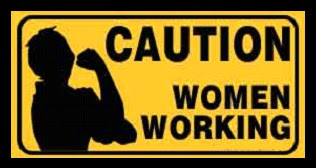WE CAN DO IT!
March is Women's History Month. It's almost impossible today to imagine that, just a couple of generations ago, a woman who worked fulltime was more the exception than the norm. Minnesota has the 2nd highest female workforce in the nation. According to the Forbes list of "The Best Cities for Working Women in 2015," Minneapolis is 2nd and Saint Paul is 4th. We must be doing something right! So, how did we get here? Local 638's women's committee believes that working women and Teamster women had a lot to do with it! Women work every day. No matter where they live, their economic activity is vital to the economy and society, their communities, their families and their personal autonomy and growth as human beings. Here's how we have been celebrating!
.
After attending a Teamster Women's conference in 2009, Peggy Vanhese wanted to share what she had learned and inspire others to get involved in our union, especially women, because the "union difference" for women isn't just about dollars and sense, when women succeed American families succeed. Building on Peggy's creative poster project, that inspired Teamster women to make and share women's history in our local, later displayed at the Teamster Women's conference in 2012, this year our women's committee focused on sharing working women and Teamster women's stories. We also wanted to highlight that "A Woman's Place is in Her Union!"
We started by sharing and displaying Teamster women's stories on our lockers at work.
 |
To honor, celebrate and have some fun, we asked our sisters to come to work dressed like "Rosie the Riveters" the last work day of every week in March.
We are sharing the stories of extraordinary Teamsters Clara Day and Regina V. Polk as they fought for workers rights, civil rights and women's rights. Did you know more than 15,000 Teamster women traveled to Washington, D.C. between 1962 and 1968? The women who joined the DRIVE motorcades traveled by bus to meet Senators and Congressmen to discuss labor related issues. They hosted the well publicized "Scoring Banquets" where they would get up and rate politicians' voting records, often with the spotlighted Senator or Congressman seated at the table. Minnesota Senator Hubert Humphrey said he had never seen a more effective political action program than the Teamster women's motorcades.
We made a "Rosie the Riveter" photo back drop and took some fun pictures!
With our brothers and sisters, we are sharing stories of our working mothers and grandmothers, it's exciting to find out that some were "Rosie's" themselves! We are sharing a bit of history with those who were not taught in school much about women's history or the progress, contributions and sacrifices that our labor movement has made in social progress.
The AFL-CIO conducted a national survey of working women last year and the results are in! Today, more and more women are the primary breadwinners and financial decision-makers in their households. Women overall still earn 79 cents for every dollar a man earns. For women of color, the gap is even larger, African-American (60 cents) and Latino (55 cents). A report last year said that American men will likely earn more than women until 2058. For families to thrive working women must have equal pay and equal say today!
The truth is, in most cases, in order to be paid the same as men, women need to have a union agreement. Unions have taken major steps forward when it comes to furthering women’s rights in the workplace and Teamster contracts have historically lead the way when it comes to gender equality. Why is a woman's place in her union? For women and families it's common sense! As Susan B. Anthony said so many years ago,
"Join the union, girls, and together
say Equal Pay for Equal Work!"






